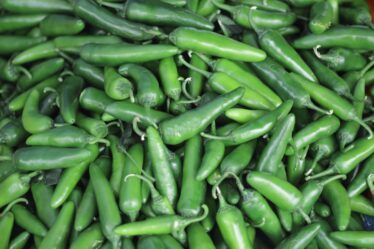
Korean cuisine is known for its bold flavors and spicy dishes, and at the heart of this cuisine is the Korean chili pepper. Also known as gochugaru, Korean chili pepper is a key ingredient in many traditional Korean dishes, adding heat, flavor, and depth to the food. It is an essential spice that is used in everything from kimchi to stews and stir-fries.
Korean chili pepper is unique in its characteristics. It has a vibrant red color and a slightly smoky flavor that sets it apart from other chili peppers. It has a medium level of heat, making it accessible to those who enjoy spicy food but may not be able to handle extremely hot peppers. The texture of Korean chili pepper is also distinct, with a slightly coarse and flaky consistency.
Key Takeaways
- Korean chili pepper is a staple ingredient in Korean cuisine, known for its spicy and flavorful taste.
- The history of Korean chili pepper dates back to the 16th century, and it has evolved over time to include different varieties and uses.
- There are several types of Korean chili pepper, including gochugaru, gochujang, and cheongyang chili, each with their own unique flavor and purpose in cooking.
- Korean chili pepper has numerous health benefits, including aiding in weight loss and boosting the immune system.
- To choose, store, and prepare Korean chili pepper, it is important to consider factors such as freshness, heat level, and the desired texture.
The History and Evolution of Korean Chili Pepper
The origins of chili pepper in Korea can be traced back to the 16th century when it was introduced by Portuguese traders. However, it wasn’t until the 18th century that chili pepper became widely cultivated and used in Korean cuisine. The spice quickly became popular due to its ability to add flavor and heat to dishes.
Over the years, Korean chili pepper has been influenced by Chinese and Japanese cuisine. Chinese cuisine introduced the concept of using chili peppers as a spice, while Japanese cuisine brought new varieties of chili peppers to Korea. These influences led to the development of different varieties of Korean chili pepper, each with its own unique flavor profile and heat level.
The Different Types of Korean Chili Pepper and Their Uses
There are several types of Korean chili pepper that are commonly used in Korean cuisine. The most popular variety is the Gochugaru, which is made from sun-dried red chili peppers that are ground into flakes. Gochugaru has a medium level of heat and a slightly sweet and smoky flavor. It is used in a wide range of dishes, including kimchi, stews, and marinades.
Another popular variety is the Cheongyang chili pepper, which is known for its high heat level. It has a bright green color and a spicy, fruity flavor. Cheongyang chili pepper is often used in spicy soups and stir-fries.
There is also the Taeyangcho chili pepper, which is milder in heat compared to Gochugaru. It has a bright red color and a slightly sweet and tangy flavor. Taeyangcho chili pepper is commonly used in making gochujang, a fermented chili paste that is a staple in Korean cuisine.
Health Benefits of Korean Chili Pepper: From Weight Loss to Immune Boosting
| Health Benefit | Description |
|---|---|
| Weight Loss | Korean chili pepper contains capsaicin, which can boost metabolism and reduce appetite, leading to weight loss. |
| Immune Boosting | The high levels of vitamin C in Korean chili pepper can help boost the immune system and fight off infections. |
| Anti-Inflammatory | Korean chili pepper contains compounds that have anti-inflammatory properties, which can help reduce inflammation in the body. |
| Heart Health | The capsaicin in Korean chili pepper can help lower blood pressure and cholesterol levels, reducing the risk of heart disease. |
| Antioxidant | Korean chili pepper contains antioxidants that can help protect the body from damage caused by free radicals. |
Korean chili pepper not only adds flavor to dishes but also offers several health benefits. It is low in calories and fat, making it a great addition to a weight loss diet. The capsaicin found in chili peppers has been shown to boost metabolism and increase fat burning.
Chili peppers are also rich in vitamins A and C, which are important for immune system support. They are also packed with antioxidants that help fight inflammation and protect against chronic diseases.
Several scientific studies have supported the health benefits of chili peppers. One study found that capsaicin can help reduce appetite and increase feelings of fullness, leading to weight loss. Another study showed that capsaicin can help lower blood pressure and improve heart health.
How to Choose, Store and Prepare Korean Chili Pepper
When choosing Korean chili pepper, look for flakes that are bright red in color and have a slightly coarse texture. Avoid flakes that are dull or have a brownish color, as this indicates that they are old or of lower quality.
To store Korean chili pepper, keep it in an airtight container in a cool, dark place. This will help maintain its freshness and flavor for a longer period of time. It is best to use Korean chili pepper within six months of purchase.
Before using Korean chili pepper in cooking, it is important to prepare it properly. To do this, you can toast the flakes in a dry pan over medium heat for a few minutes. This will enhance the flavor and aroma of the chili pepper. You can also grind the flakes into a powder using a spice grinder or mortar and pestle.
The Role of Korean Chili Pepper in Popular Korean Dishes

Korean chili pepper plays a central role in many traditional Korean dishes, adding heat, flavor, and complexity to the food. One classic dish that heavily features chili pepper is kimchi, a fermented cabbage dish that is a staple in Korean cuisine. The chili pepper flakes are mixed with other ingredients, such as garlic, ginger, and fish sauce, to create the spicy and tangy flavor of kimchi.
Another popular dish that showcases the versatility of Korean chili pepper is bibimbap. This dish consists of rice topped with various vegetables, meat, and a fried egg. Gochujang, a fermented chili paste made from Korean chili pepper, is often served on the side to add heat and flavor to the dish.
Korean stews, such as kimchi jjigae and sundubu jjigae, also rely on chili pepper for their bold flavors. The chili pepper flakes are added to the broth along with other ingredients like tofu, vegetables, and meat to create a spicy and comforting stew.
Korean Chili Pepper in Korean Street Food: A Fiery Delight
Korean street food is known for its bold and spicy flavors, and chili pepper plays a crucial role in creating these flavors. One popular street food dish that showcases the versatility of chili pepper is tteokbokki. This dish consists of chewy rice cakes cooked in a spicy chili sauce. The chili pepper gives the sauce its fiery heat and adds depth of flavor to the dish.
Another street food favorite is kimbap, which is often served with a side of kimchi. The kimchi is made with Korean chili pepper, giving it a spicy and tangy flavor that pairs perfectly with the savory rice and vegetable-filled kimbap.
Korean fried chicken is another street food delight that relies on chili pepper for its bold flavors. The chicken is coated in a spicy sauce made with Korean chili pepper, garlic, ginger, and other seasonings. The result is a crispy and flavorful chicken that packs a punch.
The Global Popularity of Korean Chili Pepper: From K-Pop to K-Food
In recent years, Korean culture and cuisine have gained immense popularity worldwide, thanks in part to the rise of K-Pop and K-Dramas. Korean chili pepper has played a significant role in this global phenomenon, as it is a key ingredient in many popular Korean dishes.
Korean chili pepper is not only used in traditional Korean cuisine but also in fusion dishes that combine Korean flavors with other international cuisines. This has helped introduce Korean chili pepper to a wider audience and has contributed to its growing popularity.
Western countries, in particular, have embraced Korean cuisine and chili pepper. Korean barbecue restaurants have become increasingly popular, allowing diners to grill their own meat and enjoy it with a variety of dipping sauces made with Korean chili pepper. Korean fried chicken has also become a favorite among food enthusiasts, with many restaurants offering their own unique take on this spicy dish.
Korean Chili Pepper in Fusion Cuisine: A Match Made in Heaven
The versatility of Korean chili pepper makes it an ideal ingredient for fusion cuisine. It pairs well with a wide range of flavors from different cuisines, adding heat and complexity to dishes.
One example of fusion cuisine that incorporates Korean chili pepper is Korean-Mexican fusion. Korean tacos, for instance, combine the flavors of Korean barbecue with the convenience of a taco. The meat is marinated in a sauce made with Korean chili pepper, garlic, and soy sauce, giving it a spicy and savory flavor.
Korean chili pepper can also be used in fusion dishes that combine Korean flavors with other Asian cuisines. For example, a Thai-Korean fusion dish could incorporate Korean chili pepper into a traditional Thai curry, adding a spicy kick to the dish.
The potential for Korean chili pepper to become a staple ingredient in global cuisine is vast. Its unique flavor profile and medium heat level make it accessible to a wide range of palates, and its versatility allows it to be used in a variety of dishes.
Korean Chili Pepper, the Secret Ingredient to Authentic Korean Cuisine
Korean chili pepper is an essential spice in Korean cuisine, adding heat, flavor, and complexity to dishes. Its unique characteristics and versatility make it a staple ingredient in many traditional Korean dishes.
Not only does Korean chili pepper enhance the flavors of food, but it also offers several health benefits. It is low in calories and fat, making it a great addition to a weight loss diet. It is also rich in vitamins and antioxidants that support immune system health.
As Korean culture and cuisine continue to gain popularity worldwide, so does the demand for Korean chili pepper. Its distinct flavor profile and medium heat level make it accessible to a wide range of palates, making it an ideal ingredient for fusion cuisine.
In conclusion, Korean chili pepper is the secret ingredient that adds spice and depth to authentic Korean cuisine. Its unique characteristics and versatility make it an essential spice in many traditional dishes. Whether you’re enjoying classic Korean dishes or exploring fusion cuisine, Korean chili pepper is sure to add a fiery kick to your culinary adventures.
If you’re a fan of the fiery heat of chili peppers, you might also be interested in exploring the world of Korean cuisine. Known for its bold flavors and spicy dishes, Korean food often incorporates chili peppers in various forms. In fact, chili pepper is a key ingredient in many iconic Korean dishes like kimchi and gochujang. If you’re curious to learn more about the fascinating world of Korean cuisine and its use of chili peppers, check out this insightful article on Flavorful Sips: Chili Pepper Korean: A Spicy Journey into Korean Cuisine.



